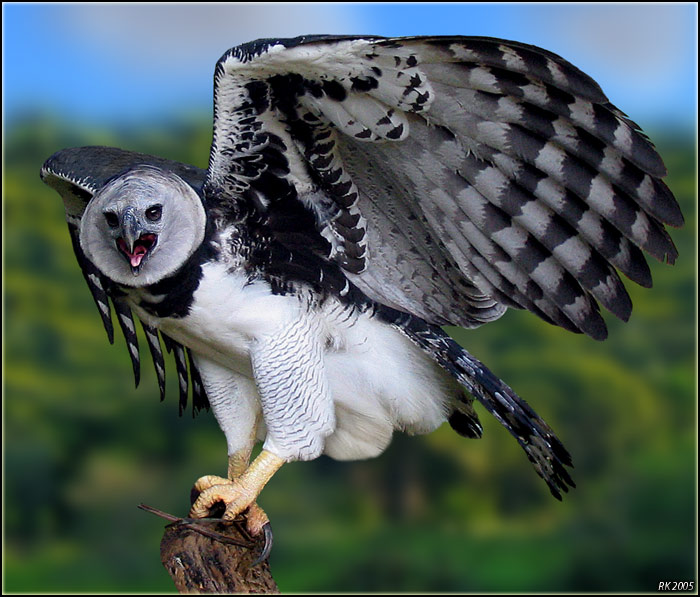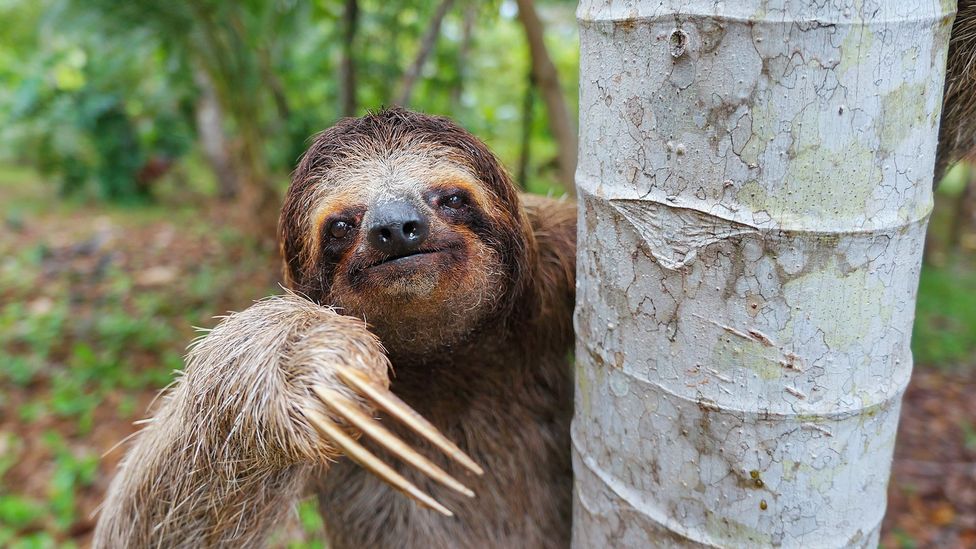
:max_bytes(150000):strip_icc()/2830722126_350e583f83_k-f700617f689d402aba43863091e72d91.jpg)
The sloth's radio-collar was monitored by the Automated Radio Telemetry System (ARTS, Crofoot et al., 2008 Lambert et al., 2009). We fixed a radio collar to the adult and immediately released both individuals together back into the forest canopy. We did not separate the baby from the mother, but obtained a weight of the two together (6 kg) and estimated the weight of the mother to be 3.5–4.5 kg. The sloth was an adult female with a young of about four months. We caught a three-toed sloth on 13 March 2006 by climbing a tree using the single rope technique ( Moffett and Lowman, 1995) and securing the sloth with a snare pole ( Montgomery and Sunquist, 1975 Rattenborg et al., 2008). The forest type is mixed, with both extensive second-growth regions as well as old-growth primary forests. The habitat is moist tropical forest ( Tosi, 1971 Leigh, 1999), and annual precipitation is approximately 2,600 mm, with a pronounced dry season ( Windsor, 1990). The minimum distance between the island and the mainland is 200 m, although small islands break up this gap in some places. BCI is a hilltop that was isolated from the mainland in 1914 when the Chagres River was dammed to create Lake Gatun as part of the Panama Canal. We conducted this work on Barro Colorado Island (BCI), Panama (1,500 ha 9☁0′N, 79★0′W), part of the Barro Colorado Nature Monument (5,500 ha total Leigh, 1999). Here we report the possibility of an exception in the opposite direction, with predation of a large prey by a relatively small predator. The exceptions to this rule have come primarily from large predators eating small, superabundant prey, such as the sloth bear ( Ursus ursinus, Shaw 1791) feeding on colonies of invertebrates ( Carbone et al., 1999). The relationship between the body size of predator and prey is well established across mammalian carnivores (prey mass = 1.19 predator mass Carbone et al., 1999) and predatory birds ( Newton, 1979). Predators are less likely to attack larger prey because they are harder to kill and are more likely to injure the attacking predators when defending themselves. Larger animals have fewer potential predators, with the very largest species, such as adult elephants, facing virtually no predation risk ( Sinclair et al., 2003). Amidst these, body size has been identified as the most important effect on predator-prey interactions.

If they fall off, well, they’re on their own.Predation risk has driven a diverse array of adaptations to allow animals to hide from, escape from, or fight against predators ( Endler, 1991). That means their babies must climb onto mom’s back by themsevles and hang on for dear life.

Like its hair, the sloths toenails face forward and are not retractable. The sloth’s “home-grown” algae is highly nutritious so the sloth slurps down the green algal slime that it gathers when it grooms its coat with its scoop-shaped toenails. Each hair has tiny pits all along it that serve as “planters” for an algae that grows on the sloth and turns them green - a great camoflage benefit when you live among leaves. –Their fur grows forward (rather than back like all other animals) so that rains drains off them while hanging upside down. So sloths come down about once a week, trek some distance from their tree to defecate, bury their feces to hide the smell and then lumber back up to their perch. They hang upside down, motionless from the canopy branches of cecropia trees for days at a time, munching on leaves when the spirit moves them.ĭid you know that sloths don’t defecate from their perch? The reason is that predators would note their presence from the scent on the ground below. It’s true that sloths don’t move much, but that is not because they’re lazy - it is so they won’t be noticcd by predators. In Brazil they call a sloth preguica, which means lazy.

We have been looking in the trees for them for a long time. Yesterday we saw our first sloth! Sloths are one of my favorite animals.


 0 kommentar(er)
0 kommentar(er)
